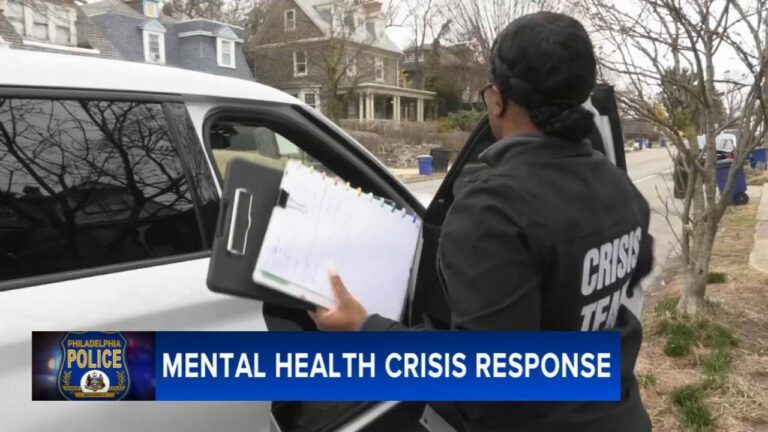Table of Contents
- Mental Health Crises and Taser Deployment Patterns in Law Enforcement
- Examining the Impact of Taser Use on Individuals Experiencing Mental Health Emergencies
- Training Gaps and Policy Shortcomings in Handling Mental Health Incidents with Tasers
- Strategic Recommendations for Safer Police Interventions and Alternative Response Models
- In Conclusion
Mental Health Crises and Taser Deployment Patterns in Law Enforcement
Recent data highlights a concerning trend in how law enforcement agencies employ Tasers during interactions involving individuals experiencing mental health crises. While these devices are often viewed as a less-lethal alternative to firearms, the patterns of their deployment reveal complexities that demand greater scrutiny. Studies indicate that officers frequently resort to Tasers in situations where the subject demonstrates signs of psychological distress rather than overt physical aggression. This raises critical questions about training adequacy, de-escalation techniques, and the role of specialized mental health units within police departments.
Key factors influencing Taser use in mental health incidents include:
- Officer training: Limited exposure to mental health crisis intervention can lead to premature escalation.
- Incident context: Situations often unfold rapidly, leaving little room for alternative approaches.
- Availability of resources: The presence (or absence) of crisis response teams significantly affects outcomes.
- Community demographics: Certain populations may experience disproportionate Taser deployment due to systemic biases.
Addressing these patterns requires a multi-faceted approach that prioritizes enhanced education, increased collaboration with mental health professionals, and comprehensive policy reforms. Only through a nuanced understanding of these dynamics can law enforcement reduce harm and improve responses to vulnerable individuals in crisis.
Examining the Impact of Taser Use on Individuals Experiencing Mental Health Emergencies
The deployment of Tasers in mental health emergencies has sparked significant debate among law enforcement agencies, healthcare professionals, and advocacy groups. Research indicates that individuals undergoing psychiatric crises are particularly vulnerable to adverse effects when subjected to electric control devices. Unlike typical confrontations, mental health episodes often involve heightened sensory sensitivities and impaired decision-making, which can exacerbate the physical and psychological trauma caused by Taser activation. Reports highlight cases where Taser use not only failed to de-escalate situations but also resulted in lasting injuries, including increased anxiety, post-traumatic stress, and in some cases, fatal outcomes.
In examining these incidents, several critical factors emerge:
- Risk of exacerbation: Taser shocks may intensify agitation or paranoia, complicating crisis intervention efforts.
- Training deficiencies: Insufficient officer training in recognizing and managing mental health symptoms leads to inappropriate Taser use.
- Alternatives availability: Options such as crisis intervention teams and non-lethal restraint methods often remain underutilized.
- Policy gaps: Lack of comprehensive guidelines tailored to psychiatric emergencies results in inconsistent application of force.
Training Gaps and Policy Shortcomings in Handling Mental Health Incidents with Tasers
Despite increasing awareness around mental health crises, significant training gaps persist in equipping law enforcement officers with the necessary skills to effectively manage these sensitive situations when using Tasers. Current protocols often emphasize physical control and compliance without adequately addressing the complexities of mental health emergencies. Officers may lack comprehensive guidance on de-escalation techniques tailored to individuals experiencing a crisis, inadvertently increasing risks of injury or exacerbating distress. Additionally, the absence of standardized mental health crisis intervention modules in many police training academies leaves personnel underprepared for the nuanced challenges they face in real-time encounters.
On the policy front, shortcomings are evident in the inconsistent frameworks governing Taser deployment during mental health incidents. Jurisdictions vary widely in their guidelines, with some lacking clear restrictions on Taser use against vulnerable populations. The lack of robust oversight mechanisms and data collection further hampers accountability and the ability to refine policies based on empirical evidence. Key issues include:
- Inadequate requirements for mental health professional involvement during or immediately after incidents involving Tasers.
- Limited protocols that fail to prioritize alternative, non-forceful interventions.
- Insufficient monitoring and reporting standards to track the impact of Taser use on individuals with mental health conditions.
Addressing these training and policy gaps is critical to safeguarding the rights and well-being of those in crisis while enhancing public trust in law enforcement responses.
Strategic Recommendations for Safer Police Interventions and Alternative Response Models
Prioritizing de-escalation techniques is essential for minimizing the use of force during mental health emergencies. Law enforcement agencies should invest in advanced, scenario-based training that emphasizes verbal communication, empathy, and patience. Incorporating mental health professionals into response teams can further reduce reliance on tasers and other coercive tools by ensuring that individuals in crisis receive specialized care. Additionally, protocols must be standardized nationwide to promote consistent and safer intervention methods across jurisdictions.
Emerging alternative response models highlight the effectiveness of community-based crisis intervention teams that combine social workers, paramedics, and trained peer specialists to co-respond alongside police when needed. These models have demonstrated a reduction in violent encounters and improved outcomes for those experiencing mental health episodes. Funding and policy reforms are crucial to expand such programs, shifting the emphasis from punitive to supportive measures. Communities benefit when emergency responses address root causes rather than immediate symptoms.
In Conclusion
In conclusion, the intersection of mental health crises and police use of Tasers remains a complex and pressing issue. As law enforcement agencies continue to navigate these challenging encounters, ongoing training, improved crisis intervention strategies, and enhanced collaboration with mental health professionals are critical. Addressing these factors is essential to ensuring both public safety and the humane treatment of individuals experiencing mental health emergencies. Continued dialogue and research will be vital in shaping policies that balance enforcement with empathy, ultimately reducing the risk of harm and promoting better outcomes for all involved.Check Our Other Blogs
- StunGun – Your Trusted Source for Stun Guns, Laws, and Self-Defense Tips
- PepperSprayLaws – Your Trusted Resource for Pepper Spray Information
- StunGunLaws – Your Trusted Guide to Stun Gun Legality and Safety





